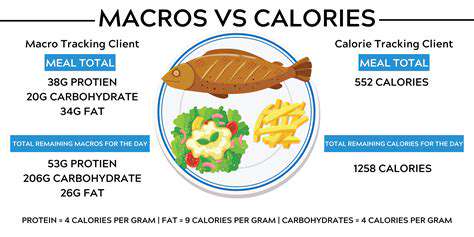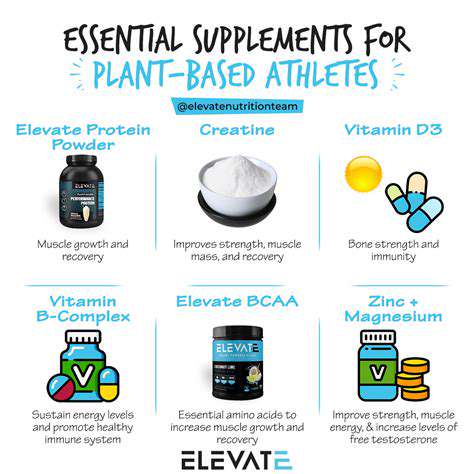Plant Based Nutrition for Muscle Gain
Beans, lentils, and chickpeas form the backbone of plant-based nutrition across global cuisines. These humble ingredients deliver not just protein but also digestive-friendly fiber that keeps you satisfied for hours. Their slow energy release makes them perfect for active lifestyles. Try blending chickpeas into hummus or tossing black beans into tacos for effortless protein boosts.
What many miss is how legumes team up with grains to form complete proteins. A simple meal of brown rice with kidney beans provides all essential amino acids your muscles crave. Their budget-friendly nature makes them accessible protein powerhouses for everyone.
Soy: The Complete Package
Tofu's chameleon-like quality lets it star in stir-fries or blend seamlessly into smoothies. Tempeh's firm bite makes it a satisfying meat alternative, while edamame offers snackable nutrition. These soy-based options stand out by delivering all nine essential amino acids, matching animal proteins in biological value.
Nuts and Seeds: Protein On-the-Go
Almonds and pumpkin seeds transform any snack into a protein opportunity. Their healthy fats do double duty - supporting heart health while helping absorb fat-soluble vitamins. Sprinkle hemp seeds on salads or blend cashews into creamy sauces for effortless nutrition upgrades.
Grains: The Protein Foundation
Quinoa earns special mention as the only grain providing complete protein. Overnight oats with chia seeds or farro salads demonstrate how grains anchor nutritious meals. Their complex carbs provide sustained energy for workouts while contributing to daily protein totals.
Vegetables: Unexpected Protein Contributors
A cup of cooked spinach delivers 5 grams of protein - surprising for a leafy green. Roasted Brussels sprouts or grilled asparagus add both flavor and nutrition. While not protein powerhouses alone, vegetables collectively make meaningful contributions to plant-based diets.
Nutritional Yeast: The Flavor Booster
This vegan pantry staple adds cheesy flavor while packing 3 grams of protein per tablespoon. Its B-vitamin content supports energy metabolism, making it particularly valuable for active individuals. Try it on popcorn or whisked into salad dressings.
Algae: The Ocean's Protein
Spirulina's deep green color signals its nutrient density, offering 4 grams of protein per teaspoon. While potent, these supplements work best when complementing a varied diet rather than replacing whole food sources.
Calorie and Macronutrient Management for Muscle Growth

Personalized Calorie Planning
Your ideal calorie intake depends on multiple factors including workout intensity and recovery needs. Tracking intake for two weeks provides more accurate data than online calculators. Adjust portions gradually rather than making drastic changes.
Macronutrient Synergy
Protein builds muscle, carbs fuel workouts, and fats support hormone production. The magic happens in their ratios - active individuals often thrive on 30% protein, 40% carbs, and 30% fats, but individual needs vary.
Protein Timing Matters
Distributing protein across 4-5 meals optimizes muscle protein synthesis. Post-workout meals should combine fast-digesting proteins with carbs to kickstart recovery. Casein protein before bed provides slow-release amino acids overnight.
Smart Carb Selection
Time refined carbs around workouts when your body can best utilize them. At other meals, focus on fiber-rich options like sweet potatoes and berries that provide steady energy without spikes.
Essential Fats
Omega-3s from walnuts and flaxseeds help reduce exercise-induced inflammation. Avocados provide monounsaturated fats that support joint health - crucial for frequent trainers.
Hydration and Nutrient Timing
Muscle tissue is 75% water - dehydration impairs performance and recovery. Drink half your body weight in ounces daily, increasing with sweat loss. Pair water-rich foods like cucumbers with protein for hydration and nutrition.
Practical Portioning
Use hand measurements: palm-sized protein portions, fist-sized carbs, and thumb-sized fats. Eating every 3-4 hours maintains energy and prevents overeating at main meals.
Muscle stiffness often signals inadequate recovery nutrition. Ensuring proper protein intake and hydration can alleviate these symptoms and improve mobility.
Supplementation Strategies for Plant-Based Athletes

Targeted Supplement Use
View supplements as precision tools rather than cure-alls. Creatine monohydrate has the strongest evidence for enhancing strength gains, while beta-alanine benefits high-intensity athletes. Always prioritize food first.
Personalized Nutrition
Blood work reveals individual deficiencies - common ones for plant-based athletes include B12, iron, and vitamin D. Annual testing helps customize supplementation rather than guessing needs.
Quality Assurance
Look for NSF Certified for Sport or Informed Choice labels that screen for banned substances. Third-party testing ensures label accuracy - crucial for competitive athletes.
Medication Interactions
Green tea extract may interact with blood thinners, while high-dose calcium can affect thyroid medication absorption. Always maintain an updated supplement list for your healthcare providers.
Strategic Timing
Take iron with vitamin C but separate from calcium-rich foods. Fat-soluble vitamins (A,D,E,K) absorb best with meals containing fats. Probiotics work best on empty stomachs.
Progress Tracking
Keep a symptom journal when starting new supplements. Note energy levels, digestion, and workout recovery. Give supplements 4-6 weeks before evaluating effects, except for acute reactions.
Sustainable Practices
Rotate supplements periodically rather than continuous long-term use. Focus on building nutrient density through diverse whole foods, using supplements only for demonstrated needs.